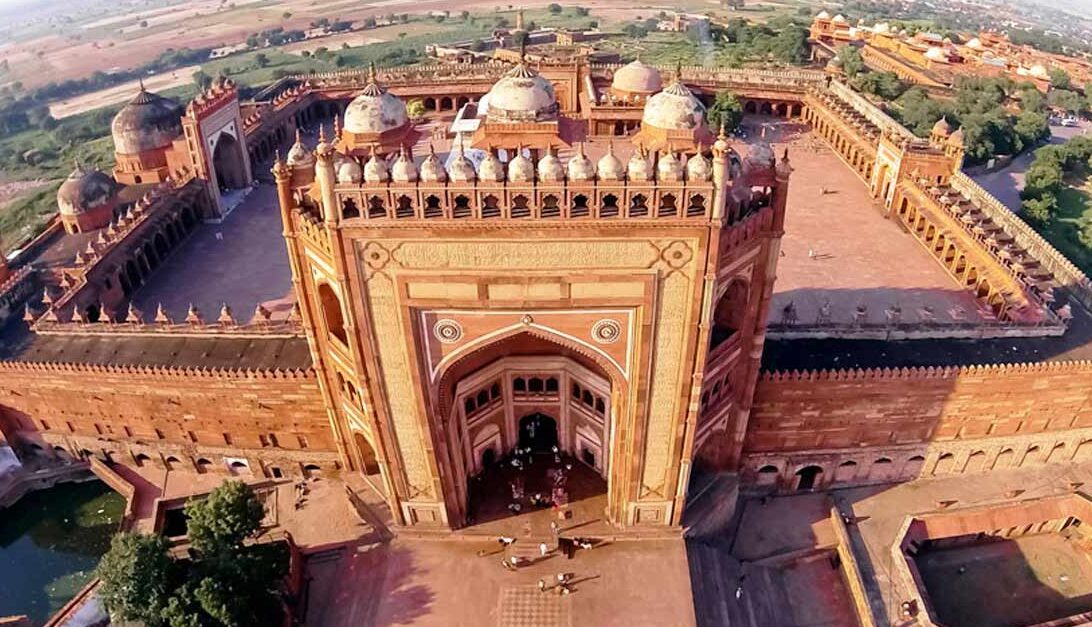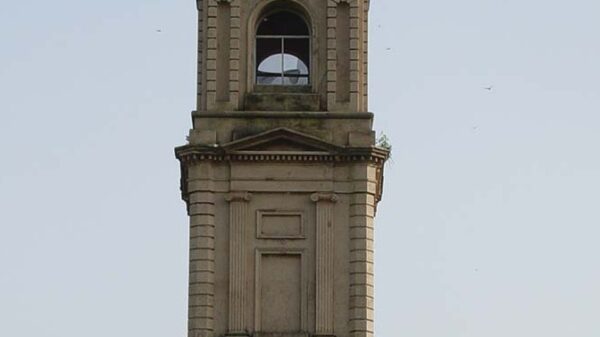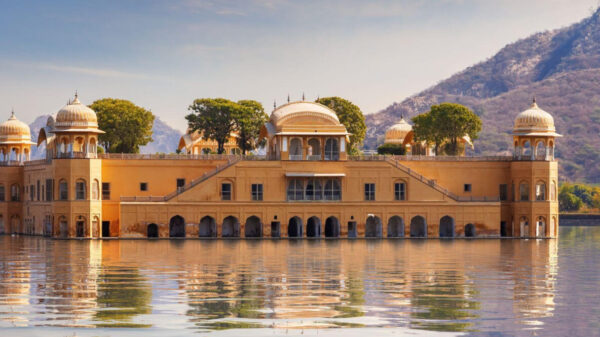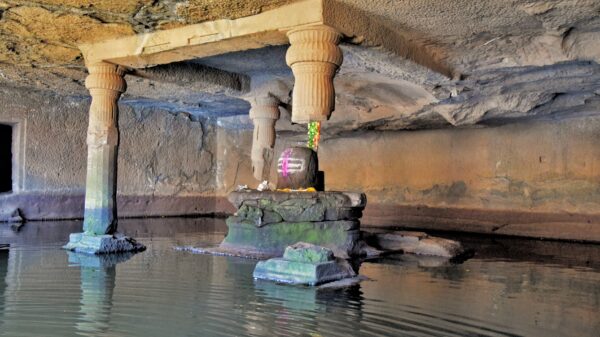Fatehpur Sikri is located in the Indian state of Uttar Pradesh. It shows the Mughal Empire’s magnificence and beautiful architecture. Travelers from all over the world come to this UNESCO World Heritage site to explore this beautiful architecture and rich history. It is a historical wonder. We will explore the fascinating region of Fatehpur Sikri in this travel blog and learn about its fascinating history.
A Glimpse into History
The famous Mughal Emperor Akbar built Fatehpur Sikri, or the “City of Victory,” in 1569. It was built as the Mughal capital and as a memorial to his triumph over the local Rajput kings. The city’s architecture, which combines Islamic, Persian, and Indian forms, was painstakingly planned and created. It was left impressively intact for future generations to discover after serving as the capital of the Mughal Empire for 14 years before being abandoned.
Buland Darwaza
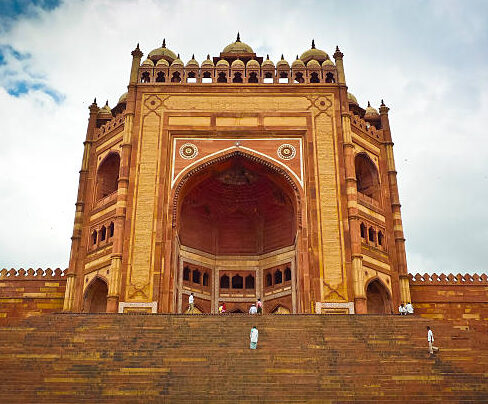
The magnificent Buland Darwaza, also known as the “Gate of Magnificence,” is a striking entryway that astounds guests. With a height of 54 meters, it is among the world’s tallest gateways. The gate honors Akbar’s triumph in Gujarat with elaborate carvings and Quranic passages. The weight of history enveloping you is palpable as you walk through this imposing gate.
Diwan-i-Khas
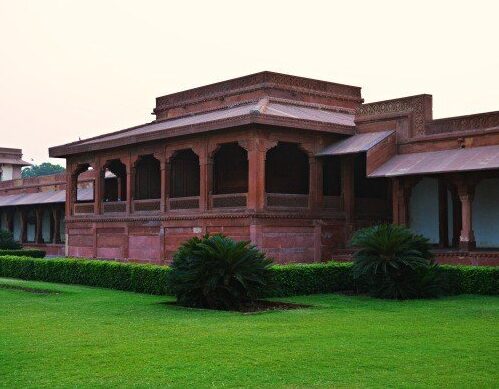
One of the best examples of Akbar’s architectural genius is seen within Fatehpur Sikri in the Diwan-i-Khas, or “Hall of Private Audience”. This building was intended to hold exclusive parties with a small group of courtiers. Its distinctive elephant-shaped center pillar illustrates Akbar’s love of fusion architecture. One gets a feeling of the grandeur that once filled this hall from the elaborate interior design and the carved marble.
Diwan-i-Aam
Another amazing building in Fatehpur Sikri is the Diwan-i-Aam, also known as the “Hall of Public Audience.” Emperor Akbar held public meetings there to hear complaints from the populace. The stunning row of columns and the throne that previously held Akbar’s seat take you back in time to when this great monarch engaged with his people.
Panch Mahal

The Panch Mahal, also known as the “Five-Storey Palace,” is a captivating building that stands as a testament to architectural grace. The Mughal queens used it as a leisure retreat, featuring an elaborate open-arched style. The palace is a lovely illustration of how practicality and elegance can live together.
Jama Masjid
The majestic Jama Masjid, a mosque that can hold thousands of worshippers, is also located at Fatehpur Sikri. Constructed from red sandstone, this magnificent building epitomizes Mughal architecture. Among the striking architectural features are the white marble mihrab and the imposing central dome.
Anup Talao – The Royal Tank
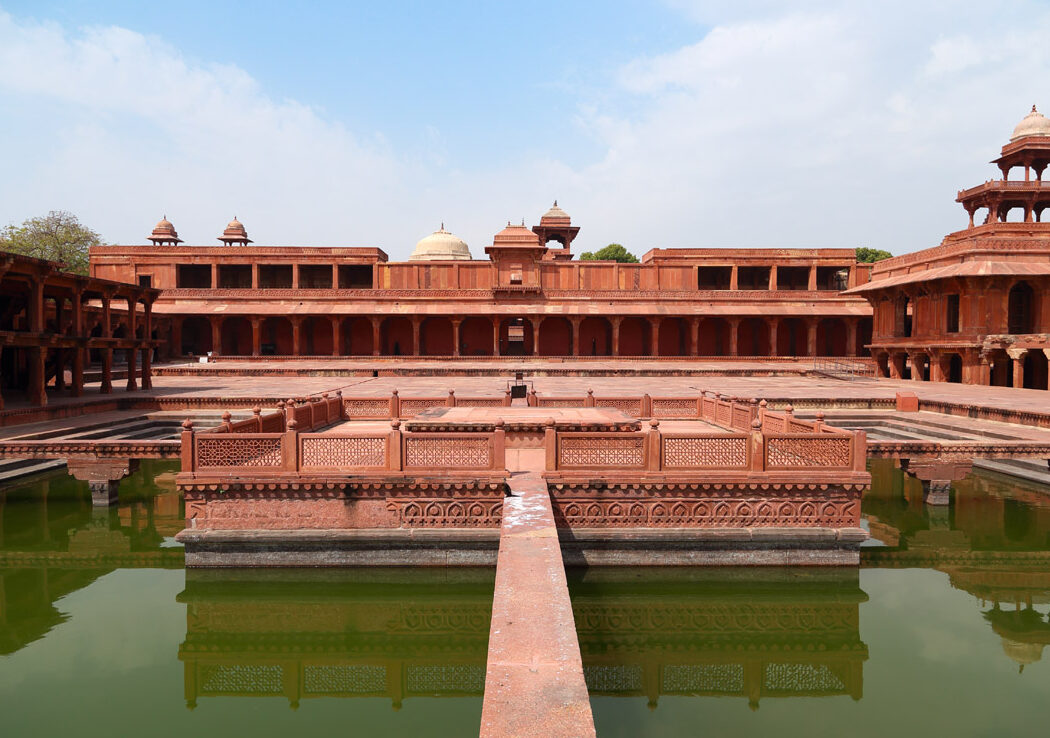
Anup Talao is a charming square water tank that reminds us of the Mughal love of tranquility and beauty. Pavilions made of red sandstone border it.This was originally the site of performances by singers and artists, and legend has it that Akbar himself had conversations with learned people by the peaceful waters.
Mariam-uz-Zamani’s Palace – The Queen’s Abode
Mariam-uz-Zamani’s Palace, tucked away inside the complex, is evidence of Akbar’s reverence for his queen. This palace, often called the Sikri Mahal because of its elaborate design and brilliant color scheme, is a magnificent example of Mughal architecture. It serves as a reminder of Akbar’s devotion to his wife.
The Dargah of Salim Chishti
The Dargah of Salim Chishti is a site of spiritual importance inside Fatehpur Sikri. At the shrine made of white marble, followers of the Sufi saint Salim Chishti pay their devotion. It’s a calm place to ponder because of the intricate latticework and the quiet environment.
Exploring the Royal Harem
The Harem Complex offers an insight into the Mughal monarchs’ private lives. The royal ladies lived in a sequence of chambers and courtyards that make up this structure. The exquisite design and well-conserved buildings provide an enthralling viewpoint on the extravagance and complexity of the Mughal court.
Conclusion
A testimony to the magnificence of the Mughal Empire is Fatehpur Sikri. Explore the sumptuous palaces, elaborate architecture, and tranquil courtyards of this medieval gem. It is a trip through India’s rich history, with each building telling a narrative, rather than just a tourist attraction. For those who like architecture and history, Fatehpur Sikri is a must-see. It provides a unique chance to enter a bygone age and join its timeless tale.

